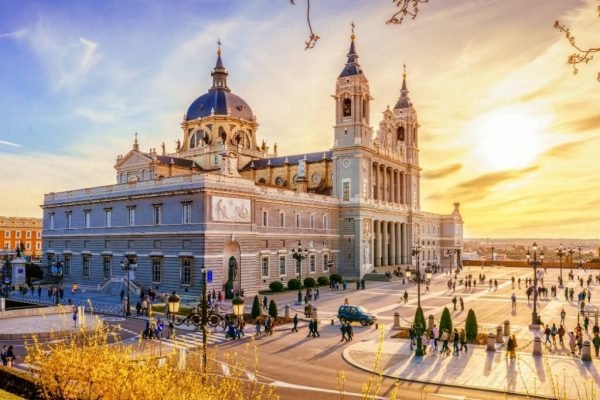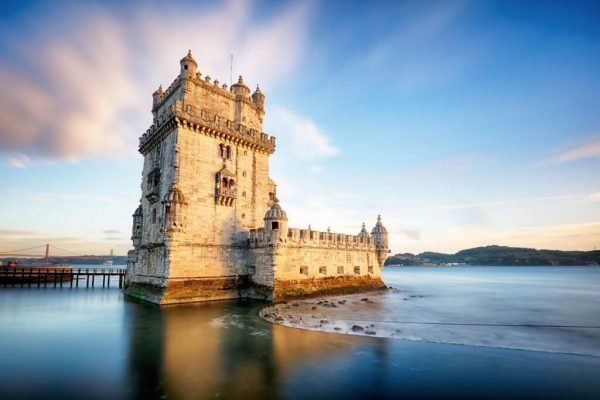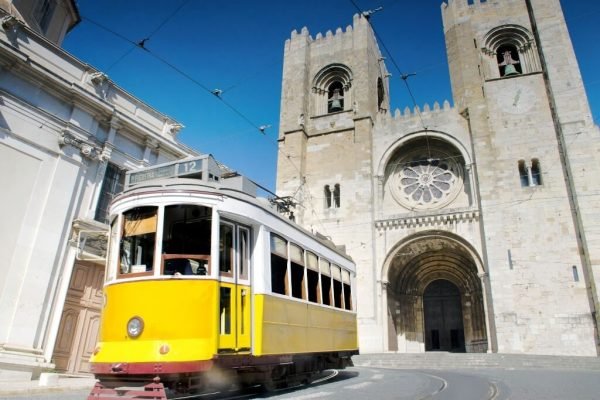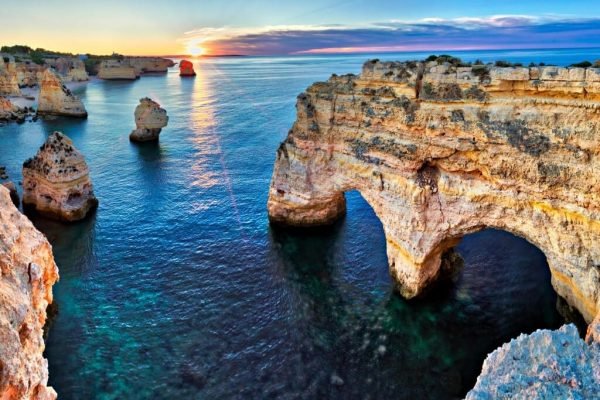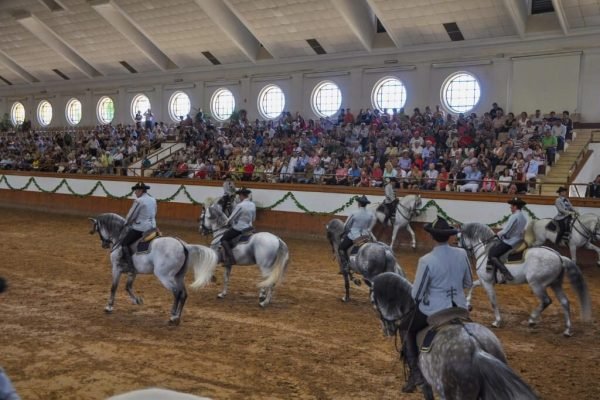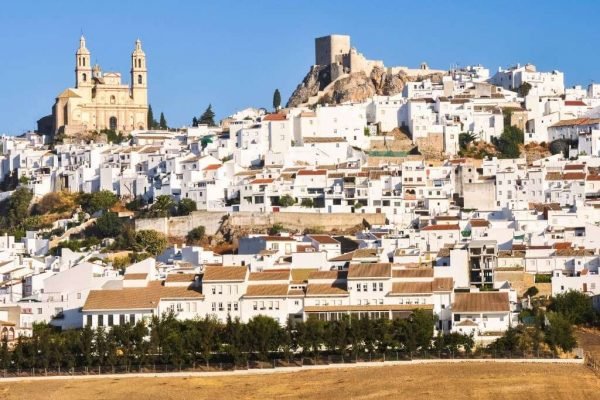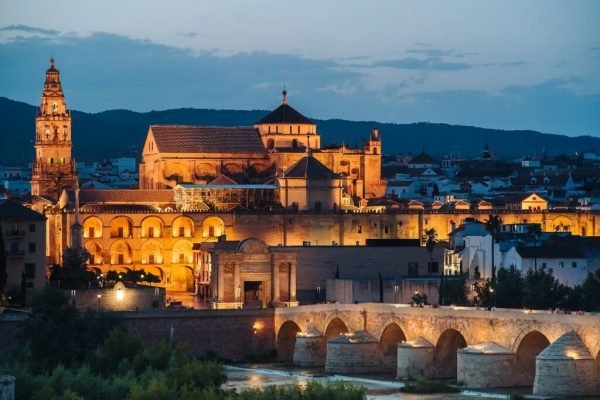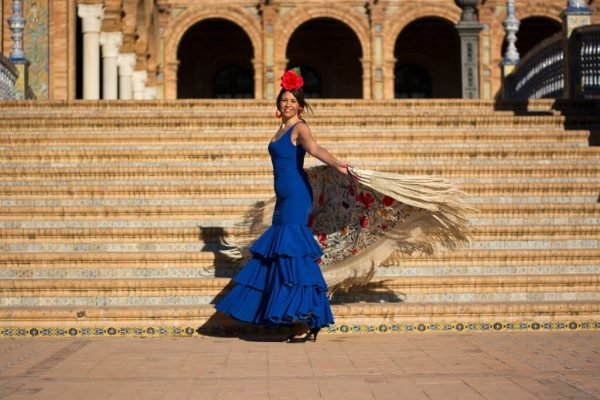Coach Tour through Spain and Portugal with Pepe Tours
PEPE TOURS
Coach Tour through Spain and Portugal with Pepe Tours
PEPE TOURS
Best of Spain and Portugal 15 days
A coach tour with Pepe Tours travelling through Spain and Portugal. We travel through Spain and Portugal, showing you the highlights of the Iberian Peninsula. After crossing Andalusia we reach Portugal where we enjoy the Algarve’s beautiful countryside. From there we continue to the Portuguese capital Lisbon and discover the magic of this beautiful city.
Departure days
Departures: on request
The tour to Portugal and Spain includes:
– Travel Insurance
– Transportation by bus with air-conditioning, video, reclining seats etc.
– 14 nights in 4-star hotels based on half board (breakfast and dinner)
– English speaking tour guide
– Visits with local guides
Itinerary of the coach holiday to Portugal and Spain:
Day 1.
Transfer from Madrid airport to the hotel and check-in. Leisure time followed by dinner and overnight stay.
Day 2.
After breakfast we’ll enjoy a sightseeing tour and drive along the Museum of El Prado, Park El Retiro, Gate of Alcala, the monumental bullring Las Ventas, Paseo de la Castellana and stadium Santiago Bernabeu, Square of Los Cibeles, Gran Via, Plaza de España, Temple of Debod, Palacio Real, Cathedral of la Almudena and the Puerta del Sol, amongst others. We will then continue towards Cordoba. After we arrive at the hotel you can spend time at leisure (or another activity). Dinner and overnight stay in the hotel.
Day 3.
After breakfast we’ll visit Cordoba’s most interesting places: the famous district, the Juderia, the synagogue and the fantastic Mosque-Cathedral. In the afternoon we drive to GRANADA, the jewel of Andalusia. We’ll enjoy a sightseeing tour and then visit the pearl of Al-Andalus, the Alhambra. In the evening you have the option of enjoying a flamenco show in a typical tablao flamenco, a walk through the Albaicin and Sacromonte districts and a panoramic view of the Alhambra by Night. Dinner and overnight stay in the hotel.
Day 4.
After breakfast we drive to Seville, the capital of Andalusia. We’ll enjoy a sightseeing tour of the most beautiful places in the city: the Maria Luisa Park, Plaza de España, Torre de Oro and the Giralda. Then we’ll visit the district of Santa Cruz and the Cathedral. After we arrive at the hotel, we’ll have dinner and an overnight stay in the hotel.
Day 5.
Breakfast and then travel to JEREZ DE LA FRONTERA, the land of horses, Sherry and Flamenco. In Jerez we’ll enjoy a sightseeing tour through the city. Afterwards, we’ll walk through the Old Town of Jerez and visit a winery in order to learn how the Sherry is made! We’ll then continue our journey to Gibraltar. After we arrive at the hotel you can spend the evening at your leisure. Dinner and overnight stay.
Day 6.
After breakfast we drive to RONDA, one of the most beautiful cities of Andalusia. We’ll take a walk through the old town to admire the “Puente Nuevo” (new bridge) and the avenue La Alameda de San Carlos which provides beautiful views over the Sierras de Ronda. Then we’ll visit the Casa de San Juan Bosco. We then leave for ANTEQUERA where we take a walk through the old town of Antequera, visit the Municipal Museum and the Palace Najera. Dinner and overnight stay at the hotel in Antequera.
Day 7.
After breakfast we’ll continue our journey towards Faro, the capital of the Portuguese ALGARVE. We’ll enjoy a sightseeing tour and then a local guide will introduce us to the most interesting areas of the city. Transfer to the hotel, dinner and overnight stay.
Day 8.
After breakfast we’ll take a daytrip to discover the essence of the Algarve; driving along Sagres and Lagos until we reach cape Cabo San Vicente, the most south-western point of Europe. We’ll return to Faro for dinner and an overnight stay at the hotel.
Day 9.
Breakfast and departure towards LISBON. Along the way we’ll visit Beja, the capital of the Alentejo region of Portugal. In the afternoon we’ll continue onwards to Lisbon crossing the awesome Vasco da Gama Bridge, Europe’s longest bridge, measuring more than 17 km long. Arrival at the hotel, dinner and overnight stay.
Day 10.
After breakfast we’ll visit Lisbon for a sightseeing tour accompanied by a local guide. Crossing the district of Alfama we will see the iconic Tower of Belem and the Monastery of Jeronimo’s. The afternoon is free to spend at your leisure, giving you time to discover the Portuguese capital on your own. Dinner and overnight stay in the hotel.
Day 11.
Breakfast followed by a half day excursion through the surrounding areas of Lisbon up to the coast of the Atlantic Ocean, along Sintra, Cascais and Estoril. The afternoon is free to spend at your leisure and you have the option of visiting the Oceanarium of Lisbon, Europe’s second largest aquarium. Dinner and overnight stay in the hotel.
Day 12.
After breakfast we’ll set off on our return journey towards SPAIN. During our trip we’ll visit the city of Evora which is a UNESCO world heritage site. We’ll then continue towards BADAJOZ. Arrival at the hotel, dinner and overnight stay.
Day 13.
After a sightseeing tour through Badajoz we will continue our trip to MERIDA which is the old roman city of Emerita Augusta. Accompanied by a local guide we’ll travel around 2,000 years back in time to the Roman period in order to learn about the architecture and the daily life of this city which was one of the biggest in the Roman Empire. In the afternoon we’ll continue our trip towards Madrid, the capital of Spain. Arrival at the hotel, dinner and overnight stay.
Day 14.
After breakfast we will visit the ‘Madrid of the Austria’s’ (the Madrid of the Habsburgs) district, the Royal Palace, Km. 0 (kilometre zero marker), Plaza Mayor, Puerta del Sol as well as the cathedral, the Almudena. You will have some leisure time and the option to visit the Prado Museum or the Queen Sofia Museum. Dinner and overnight stay in the hotel.
Day 15.
Breakfast and then you have leisure time until it’s time to transfer to the airport. Transfer to the airport where we say “Goodbye, until we see you the next time”. End of our service.
Information about destination:
MADRID is strategically situated at the geographic centre of the Iberian Peninsula, at 646 meters above sea-level. The historic Old Town of Madrid is one of the most important amongst the larger European cities and it harmoniously merges with a contemporary and convenient infrastructure.
The historic centre, also called the ‘Madrid of the Habsburgs’, was built when the Habsburgs governed Spain (hence the name). The historic centre and its impressive Plaza Mayor (opened in 1620) is vivid evidence of the emerging beauty of the city in the 16th and 17th century. This site is one of the most popular and representative of Spain.
The ‘aristocratic centre’, with its dazzling Palacio Real (Royal Palace) which is a monumental 17th century mixture of baroque and classical construction, is located near the Plaza Mayor. In close proximity is the Palacio de Oriente, the theatre of the Opera and the modern Cathedral of the Almudena which was consecrated in 1993 by Pope John Paul II. The Puerta del Sol (Gate of the Sun) which is surrounded by a diverse commercial area and the Paseo del Arte (so named because of the unique museums, palaces and gardens) complete this monumental area where the buildings of the Banco de España and the Palace of Telecommunications shine resplendently together with the beautiful fountains of ‘Cibeles’ and ‘Neptuno’.
Art and culture are essential to Madrid which is home to in excess of 73 museums! The three most noteworthy are: the Prado Museum (one of the most important galleries in the world), The Thyssen-Bornemisza Museum which houses more than 800 paintings, sculptures and carpets (from the primitive Flemish artists to the Vanguardist movements) and the Centro Nacional de Arte Reina Sofia which is dedicated to contemporary Spanish art, displaying works of Pablo Picasso, Joan Miro, Salvador Dali and Juan Gris.
ANDALUSIA has been referred to as the ‘bridge between continents’, ‘gate of Europe’, ‘melting pot of cultures’ or ‘meeting point between seas’. It occupies a strategic position and point of unification between Europe and Africa, where the Atlantic Ocean and the Mediterranean Sea meet. This land has been desired and cherished over the centuries by numerous peoples and cultures and our prehistoric ancestors chose it as a perfect location for their settlements. For almost eight centuries the Muslims occupied the Iberian Peninsula which is why their legacy, the ‘andalusi’ forms a pervasive part of Spanish and Mediterranean culture. Andalusia’s ancient history has left behind the enormous heritage and artistic legacy which we enjoy today. The historic monuments of The Alhambra of Granada, the Mosque of Cordoba or the Giralda and Old Town of Seville are milestones of humanity; although we also find precious examples of the artistic Andalusian life represented in the majority of villages and towns across the region.
Andalusia has a great legacy of Islamic, Renaissance and above all Baroque architecture embodied in its most important buildings, castles, fortresses and monasteries. It was home to Velazquez, Murillo and Picasso. Paintings, sculptures, jewels, images and archaeological remnants are located in Cathedrals, Museums, Churches, Monasteries and Palaces all across the region – preserving the precious artefacts from a period of history which witnessed powerful artistic expression and development.
There’s always a reason to visit PORTUGAL regardless of the season, length or reason for the trip. Travelling through Portugal you can enjoy landscapes, cities, coasts, villages, forests and mountains, Portugal has it all. It’s a small country but is extremely diverse: from green valleys and high mountain ranges in the north to warm welcoming beaches, vast estates with olive and oak trees in the south. Our visit allows us to: spend leisurely time in the hidden countryside, discover the historical streets of Lisbon, make an escape to Evora, wander through the rocky Serra da Estrela and enjoy a bottle of the prestigious Port wine.
The south coast of Portugal is a favourite holiday destination for tourists and has beautiful beaches and good sports facilities. Here the water is warmer and calmer (characterising the Algarve) and the region extends from the border to the Cabo San Vicente. In 1755 Faro, the capital of the Algarve, was destroyed by an earthquake and only a few remnants of the old town are left. Lagos has historical shipyards. Sagres has a 17thcentury fortress and is also the industrial centre for lobster fishing. Cabo San Vicente is the most south-western point of the European continent.
Lisbon (Portugal’s capital) is situated on the bank of the river Tagus which flows into the Atlantic Ocean. It’s one of the few European capitals with a river and sea. The Praça do Comércio (commerce square) looks out onto the Tagus estuary. Lisbon is the oldest city in Western Europe and therefore has a long history of receiving many visitors, culminating with the period of the Discovery voyages. This is why many beautiful ‘manuelino’ (late Gothic) monuments can be found in and around Lisbon, like the Tower of Belem and the Monastery of Jeronimos. Not to be forgotten are the picturesque medieval districts of Alfama and Moreira, crowned with the Castle which, together with the Barrio Alto opposite, merge together in the Baixa Pombalina (Pombaline lower town).
The Tower of Belem, in manuelino style, was built between 1515 and 1519 and is the work of Francisco de Arruda. In 1983 UNESCO declared it a World Heritage Site. The tower is situated at the mouth of the river Tagus its initial purpose was to defend the city. Later the tower was converted into a Customs Office and lighthouse.
The Monastery of Jeronimos (it’s Porguguese name being Mosteiro dos Jeronimos) is close to the Tower; these two sites are the most important in Lisbon. In 1983 Unesco declared the Monastery a World Heritage Site. Designed by the architect Diogo de Boitaca, its construction started on 6th January 1501 and finished at the end of the 16th century. The predominant style is the manuelino style (a richly ornate architectural design) and it was built to celebrate the return of Vasco da Gama from the Indies. There’s a story about where the monastery is situated – on the spot where the Ermida do Restelo (Hermitage of Restelo) stood which is the church where Vasco da Gama and his men spent the night in prayer before departing on their expedition to the Orient in 1497.
Close by is the Padrão dos Descobrimentos (Monument to the Discoveries) which is 52 meters high and was founded in 1960 to celebrate the 500th birthday of one of Portugal’s most important explorers, Prince Henry the Navigator, the discoverer of Madeira, the Azores and Cape Verde. The monument comprises a group of sculptures which form the bow of a caravel (sailing ship). The principal statue is of Henry the Navigator and on either side of the ramps are 33 historical figures who played a part in the great discoveries of Portugal.
Please note that
* Pepe Tours reserves the right to alter and modify the itinerary and the order of the excursions for organizational reasons.. Depending on hotel availability or in case of last-minute bookings, Pepe Tours may replace the scheduled hotels by others of the same category (see list of scheduled hotels in this link).

